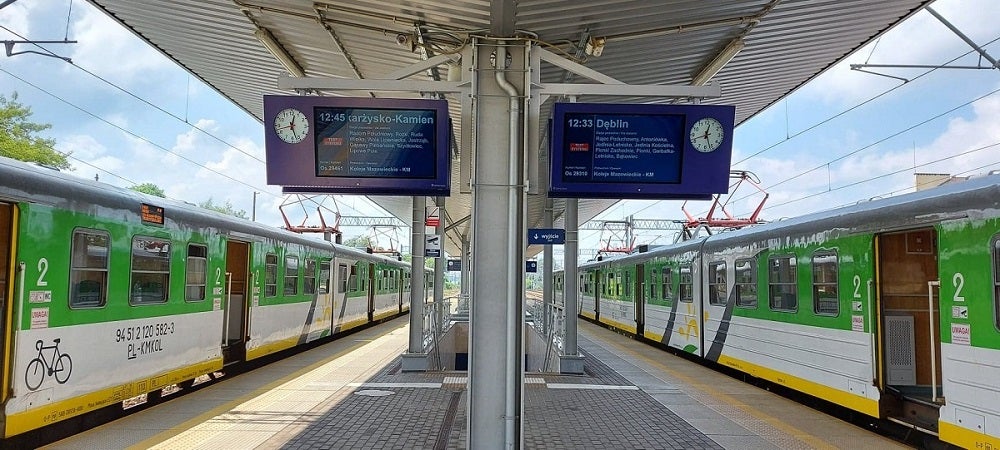
The Connecting Europe Facility (CEF) financial instrument supports investments oriented towards European infrastructure-related networks, namely transportation, power supply-based and digital ones. It makes it possible to achieve the assumptions of the European Green Deal and the digital decade. Railroad transportation has been given priority and it has to be noted that this year has been called the 2021 European Year of Railroad by the European Commission.
Ecological railway
Carried out examinations have shown that the carbon dioxide emission in the case of passenger transport by rail and trams is significantly lower than the one generated by cars and air transport. What is more, in European countries, there is a permanent downward trend with regard to the energy consumption index in terms of railways, which directly translates into economic benefits. Declining energy consumption, combined with low emission, makes it possible to consider railways a form of public transport with lower socio-environmental costs than road transport. Nevertheless, people still choose to use their own means of transport rather than public transport, which causes environmental pollution.
How to make railroad usage more attractive
The issues that undoubtedly have to be improved are the number of stops that have to be increased, better connections, including international ones and frequency of arrivals and departures, as well as the speed of travel.
In EU countries, outdated trains are replaced, new connections are created and the ‘digitisation of transport’ is performed, partially thanks to European funds.
Digital solutions in transport aimed at improving its quality and safety include rail traffic control, passenger information, electronic ticket purchasing, road traffic management and wireless communication systems in public means of transport
Real-time passenger information system and the comfort of passengers
The real-time passenger information system is an automated system that provides public transport passengers with up-to-date data. Said data mainly focuses on both the duration and course of the trip. Nevertheless, the system can provide any pieces of information that the public transport operator considers to be vital. Data can be provided through visual or voice means, as well as in many other forms. Real-time information provision is extremely important nowadays. It is vital to display the passengers the factual time of arrival by using, among others, intelligent vehicle location systems that modify the data continuously basing on traffic events. By providing travellers with real-time information, we take care of their travel comfort and contribute to the increase in the attractiveness of public transport. Thanks to this, passengers can plan their trip in a more optimal and precise manner and make more informed decisions in case of delays. Real-time information gives passengers greater control over their travel time and course.
Real-time passenger information can be provided to passengers in a myriad of ways, including:
- dynamic passenger information displays installed at stops, on platforms in the transfer centres and at stations.
- mobile phone/smartphone applications. Passengers can familiarise themselves with pieces of information on arrivals of the selected bus, tram, trolley or train. They can also check whether or not there are any delays and how packed such means of transportation are.
- intelligent automatic public address systems adapted to the needs of blind and visually impaired passengers.
The passenger information system for municipal public transport, including bus, tram and commuter railway, is predominantly available at individual stops. In addition to visual information on the current arrival times displayed on dynamic passenger information boards, there is also a voice notification generated that can be activated by pressing the text-to-speech (TTS) button. The voice can read the details of the timetable presented on the display.
When it comes to railroad-specific needs, a real-time passenger information system is designed in accordance with the regulations and guidelines of a given railway operator. Such a system mainly consists of passenger information displays and a public addressing system. All elements are connected to the command centre, which often serves as the central passenger information system.
Investments in dynamic passenger information systems showing real-time information to passengers, modern trains and efficient connections can encourage the public to switch from passenger vehicles to public transport. It will be cheaper, faster, comfortable and more controlled. The wider use of public transport will reduce CO₂ emissions in public transport. This will, in turn, positively affect our health.
DYSTEN designs and manufactures elements of dynamic passenger information systems. As a manufacturer of displays, broadcasting systems and other PIS devices, it designs and adapts them to the requirements and regulations of a given public transport operator and optimises them in terms of electricity consumption. DYSTEN is looking for partners on foreign markets, for whom it would produce PIDS components.

